Lifespan: Exam 1 - Infant Reflexes & Development
1/19
There's no tags or description
Looks like no tags are added yet.
Name | Mastery | Learn | Test | Matching | Spaced |
|---|
No study sessions yet.
20 Terms
Reflex: Tonic Labyrinthine - Prone & Supine (TLR)
Onset: Birth
Integration: 6 Months
Elicit: Change of orientation of the head in space
Response:
In prone flexor tone will predominate with arms flexed by the child’s chest
In supine extensor tone will predominate
Importance: Allows baby posture to adapt to that of the head
Reflex: Asymmetrical Tonic Neck Reflex (ANTR)
Onset: 0-2 Months
Integration: 4-6 Months
Elicit: Rotation of Head
Response:
Arm & Leg on the “jaw” side extends
Arm & Leg on the “skill” side flex
Importance:
Assists with early eye-hand regard
Provides vestibular stimulation
Changes the distribution of muscle tone
Reflex: Symmetrical Tonic Neck Reflex (STNR)
Onset: 4-6 Months
Integration: 8-12 Months
Elicit: Flexion and extension of the head (neck)
Response:
With neck flexion the upper extremities will flex and the lower extremities will extend
With neck extension the upper extremities will extend an the lower extremities will flex.
Importance:
Assist in the development of bilateral patterns of body movement
Allows the child to move up against gravity and assume quadruped.
Reflex: Palmer Grasp
Onset: Birth to 2 months
Integration: 4 to 11 months
Elicit: Place index finger into infant’s palm with pressure on metacarpal heads
Response: Infants fingers will flex around examiner’s finger
Reflex: Moro
Onset: Prenatal
Integration: 5 - 6 Months
Elicit: Infant in supine, support head & shoulders, allow head to drip back 20-30 degrees
Response: Abduction of the upper extremities (including elbows, wrists, and fingers) followed by adduction of the shoulders and flexion of the lbows/
Reflex: Rooting
Onset: Prenatal
Integration: 3 months
Elicit: use finger to stroke peri-oral skin at mouth moving laterally towards cheek
Response: Infant turns head toward stimulus
Reflex: Suck-Swallow
Onset: prenatal
Integration: 2 - 5 Months
Elicit: Place finger or nipple in infants mouth
Response: Rhythmic suckling with lips, tongue, and jaw moving synchronously.
Reflex: Landau
Onset: 3- Months
Integration: 12-24 Months
Elicit: Place the infant in a horizontal prone position, supporting their torso.
Response: In prone… head, legs & spine extend; if head is flexed, hips, knees & arms flex.
Reflex: Protective Extension
Onset: 6-9 Months
Parachute is one (6-7 months)
Side & Back (closer to 9 months)
Integration: 12 months
Elicit: Activated by sudden loss of balance
Response: The individual automatically extends their limbs to try to soften the landing & prevent injury.
Development: 0-3 Months
Eyes can follow/track an object to the right an left sides, past the midline
Grasp objects placed child’s hands
Head lag with pull to sit (head lags behind body when being pulled up into a sitting position
Turns head to both sides while on back
Males sounds back and forth with you
Makes sounds that differ depeding on whether they are happy or upset
Coos, makes sounds like oooooo, ahhh, and mmmmm
Turns or looks toward voices or people talking
Development: 4-6 Months
Touches fingers together
Begins reaching with both hands at the same time.
Touches or bangs an object on a table or hard surface.
Reaches for an object with right or left hand.
Shakes a rattle.
Uses a raking grasp (all fingers at the same time) to pick up small objects.
Raises head in line with trunk when pulled to sit
Pushes up on forearms and turns head side to side while on belly
Rolls from belly to back
Brings feet to mouth laying on back
Rolls from back to belly
Pushes up on hands with arms extended while on belly
Giggles and laughs
Responds to facial expressions
Vocalizes different vowel sounds—sometimes combined with a consonant—like uuuuuummm, aaaaaaagoo, or daaaaaaaaaa.
Blows “raspberries.”
Development: 7-9 Months
Transfers a small object from one hand to the other
Child uses an inferior pincer grasp (pads of thumb and index finger) to pick up small object
Can poke objects with index finger.
Bangs two objects together (i.e. two blocks)
Claps hands
Catches self with loss of balance in sitting
Crawls on belly
Reaches for toys to play in sitting
Sits independently
Looks at you when you call their name.
Stops for a moment when you say, “No.”
Babbles long strings of sounds, like mamamama, upup, or babababa.
Development: 9-12 Months
Releases an object into an adult’s hand upon request
Places small objects into a medium or large container.
Can turn the cover or single thick pages of a book.
Removes or dumps out objects from a container.
Is able to point finger at objects.
Crawls on hands and knees
Cruises around furniture
Moves between lying down and sitting upright without help
Pulls to a standing position with one foot leading
Walks with two hands held (then one)
Stand independently for a few seconds
Imitates and initiates gestures for engaging in social interactions and playing games,like blowing kisses or playing peek-a-boo.
Tries to copy sounds that you make.
Responds to simple words and phrases like “Go bye-bye” and “Look at Mommy.”
Says one or two words—like mama, dada, hi, and bye.
What stage of development are infants in (0-12 months)
Sensorimotor stage of cognitive development
Grasp: Crude Ulnar-Palmar Grasp
3-5 Months
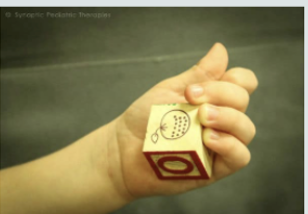
Grasp: Palmar Grasp
5-6 Months
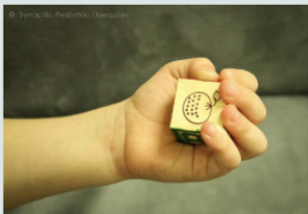
Grasp: Radial-Palmar Grasp
6-9 Months
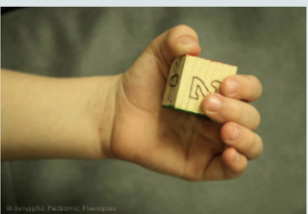
Grasp: Palmar Grasp
4-6 Months
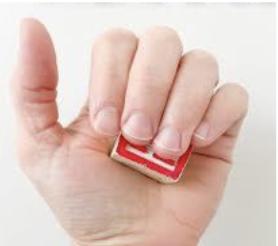
Grasp: Inferior Pincer Grasp
7-9 months
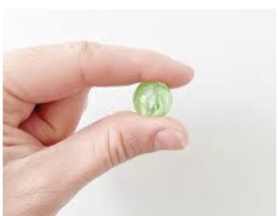
Grasp: Pincer Grasp
Begins to develop 10-12 months and refines for another 6-12 months
Dexterity, accuracy & strength improve even up to age 5 and beyond